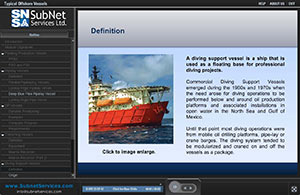
Also known as D2, the vehicle is operated off NOAA Ship Okeanos Explorer with its companion vehicle, Seirios. The movement of the ROV and its manipulator arms is guided by pilots on the surface vessel via joysticks and touchscreens on a “control box. Remotely operated vehicle (ROV) Deep Discoverer is owned by the NOAA Office of Ocean Exploration and Research and was built and continues to be maintained and operated by the Global Foundation for Ocean Exploration (GFOE). ROVs often are built with a manipulator arm designed for collecting biological and geological samples, which are deposited into boxes along the sides of the ROVs.
ROV VESSEL MEANING OFFLINE
A remotely operated underwater vehicle (technically ROUV or just ROV) is a tethered underwater mobile device, citation needed also commonly called an underwater robot. The vessel also has integrated ROV control, online inspection, survey and offline processing/review offices and client offices. ROVs can use external sensors that are mounted on the vehicle to measure things like conductivity, temperature, and depth. The ROV is using a torque wrench to adjust a valve on a subsea structure.

ROVs typically consist of video cameras, which transmit real-time surveillance to scientists aboard the surface vessel lights sonar systems and a buoyancy foam pack, which allows the vehicle to remain light and easy to maneuver when in the water. Human-occupied vehicles (HOVs) transport a small team of scientists and pilots directly to the seafloor for a limited amount of time.

This tether, which is unspooled from a storage drum within the ship, brings electrical power and signals to the ROV while returning live video feeds to the ship. Three main types of submersibles have been used on recent NOAA Ocean Exploration-supported missions: human-occupied vehicles (HOVs), remotely operated vehicles (ROVs), and autonomous underwater vehicles (AUVs).

The eight-kilometer-long steel cable that connects remotely operated vehicle Seirios with NOAA Ship Okeanos Explorer.


 0 kommentar(er)
0 kommentar(er)
